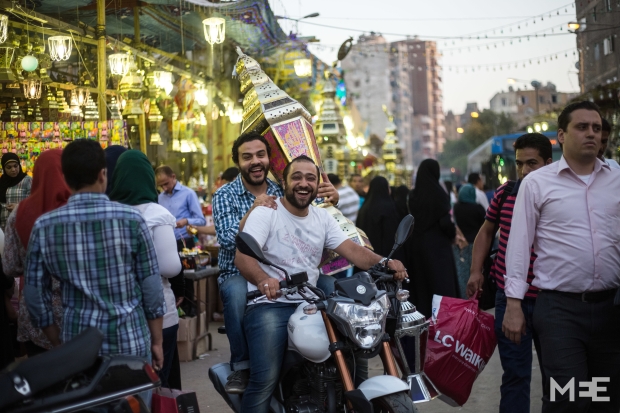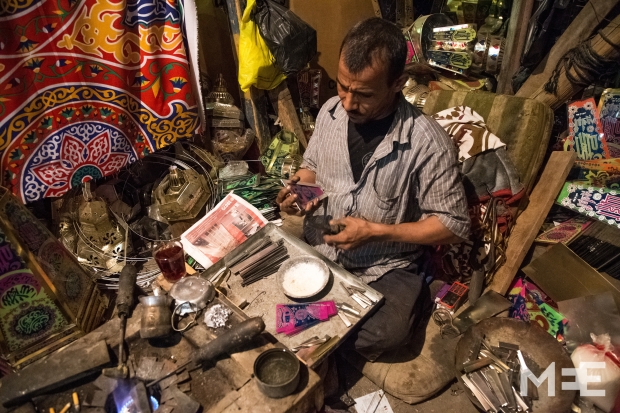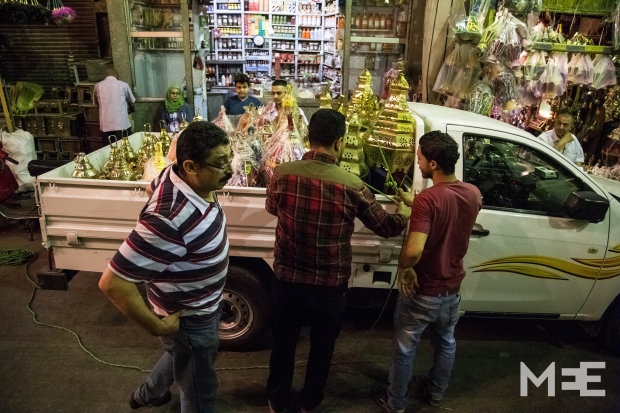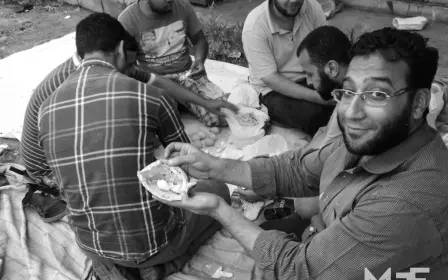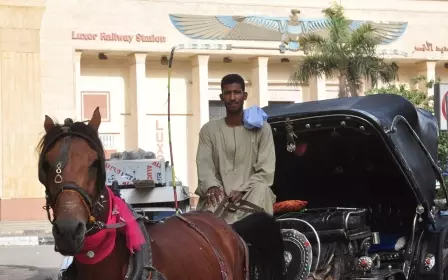Keeping alight Egypt's traditional Ramadan lantern
A flood of cheap Chinese imports has hit the small producers of the 'fanous' - the ubiquitous Ramadan lanterns of Egypt
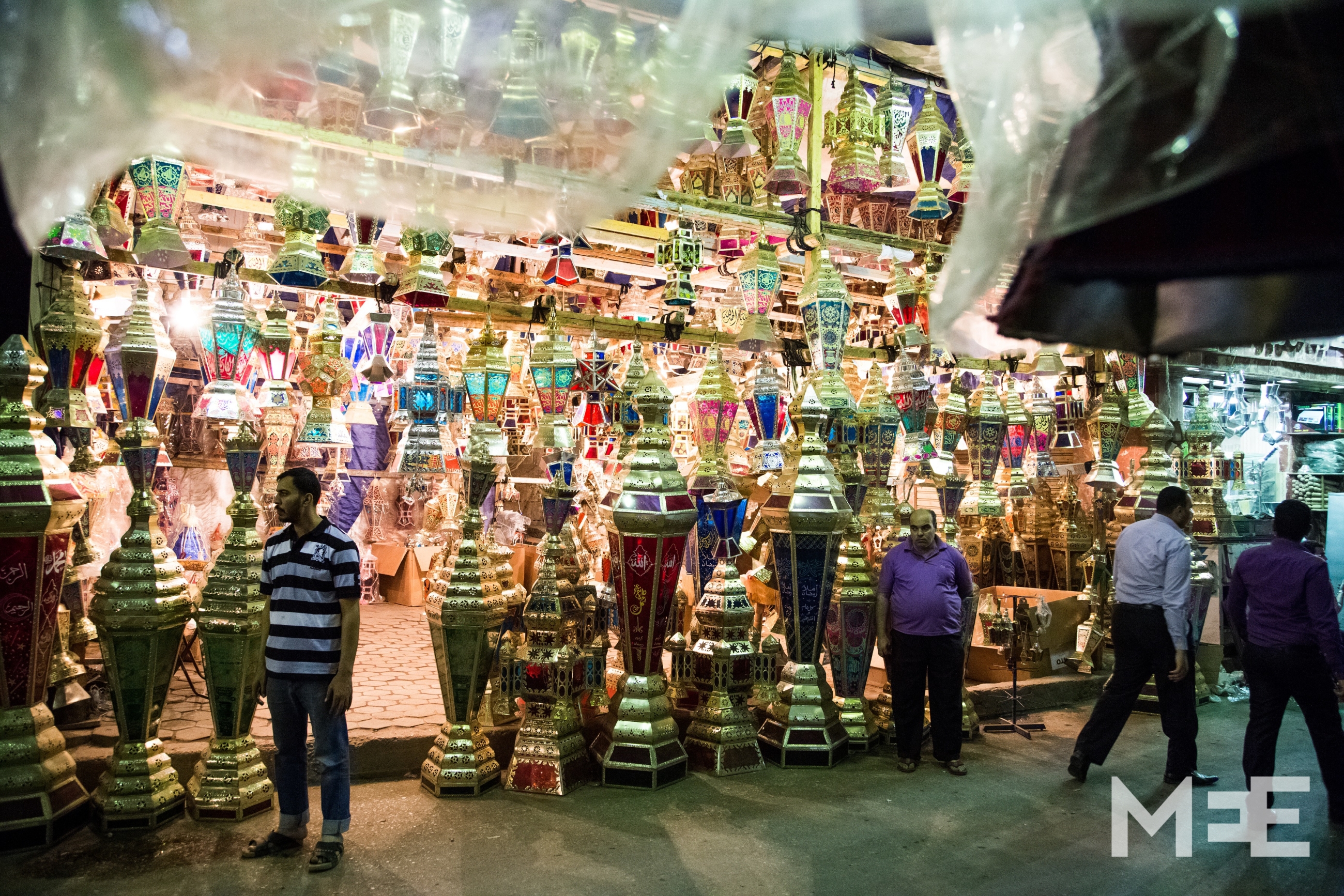
A shop displaying 'fanous' on the streets of Cairo - the ubiquitous Ramadan lanterns of Egypt (MEE/ Belal Darder)
Published date: 3 July 2015 17:21 BST
|
Last update: 9 years 4 months ago
During the Muslim holy month of fasting, Ramadan, and in the weeks leading up to it, it is hard to find a street in Cairo without the familiar glow of the fanous - or Ramadan lantern - displayed for sale on either side.
The Ramadan lantern is a folkloric symbol that goes all the way back to the days of the Fatimid Caliph El Moaz (932- 975), whose chief general Jawhar al-Siqilli ordered the people of Egypt to go out in the streets lighting candles to welcome the Caliph home from Africa.
The night was windy so the Egyptians used simple fanous - lanterns - to protect the candles from the wind. Having seen the luminous and beautifying effect, the Caliph become enamored with the idea and ordered that every mosque in Egypt should have a lit lantern in front of it.
Over the centuries following this incident, the lantern became inextricably linked to the holy month of Ramadan in Egypt. Even today, every house in Egypt makes sure to buy at least one lantern at the beginning of the month. They vary in size; some of them - those used primarily used in hotels and holiday resorts - can be as high as two or three meters; others are only 50 centimeters in height, and those are the standard ones you see in many Egyptian houses. They also come in small key-ring sizes that children play with.
For the last decade, lanterns that are made in China have been invading the Egyptian market, and in a short space of time the Chinese models became very popular for many reasons, including the fact that the Chinese lanterns use batteries to light them - not candles - making them very appealing, especially for young children. Another appeal is that the prices of the Chinese versions are very cheap in comparison to the Egyptian hand-made ones.
Consequently the lantern-making industry in Egypt has suffered, particularly because the whole trade is primarily based on the efforts of small workshop owners who weren’t able to compete with the Chinese lanterns flooding the Egyptian market. In reaction to this, last year the Egyptian government made the decision to stop importing any Chinese lanterns so as to give the local industry the chance to flourish once again.
Mohamed Abd El Rehim, a 36-year-old man who owns a small workshop in the Bab El Khalk neighborhood, says: “The decision was a good one, but the government should subsidise and support the owners of the small workshops, as the prices of the materials we use to make the lanterns has increased an insane amount in the last 10 years, and so we've had to raise the prices of the lantern, and when we raise the prices the customers buy less and less. Our customers then hold in their minds the belief that we are greedy and want to make extra profit on their account not necessarily understanding our struggle.
When asked how he ended up owning and working in this workshop, Rehim said: “I inherited this workshop from my father, who had made fanous for more than 30 years. When he passed away about seven years ago, I closed the workshop and was looking for someone to purchase it, as I already had a job as a bus driver. Unfortunately, three years ago I lost my job after a fight with my boss, and I had no other way to support my family except re-opening the workshop again.”
Some people choose to buy their lanterns directly from the workshop, since it is cheaper than getting it from vendors in local markets, but most of Mohamed’s customers are street vendors who always request special offers from him as they buy in bulk. It's a familiar sight to locals to see a vendor parked in front of the workshop cramming lanterns into their car after spending some time negotiating a deal with Mohamed.
Ramadan lantern vendors are seen out and about in the streets all over Cairo, but they tend to concentrate on a few places - El Sayda Zaynab Mosque is one, where nearby lantern vendors gather in small or large tents, exhibiting their goods and calling for passersby to buy lanterns for their houses and their relatives.
Rasha Lotfy is a street vendor in her late thirties. She changes her goods at least five or six times a year according to the season. When asked how good the lantern market seems this year, she commented: “It isn’t good at all. It seems as if I have no money. I spent 25,000 pounds getting all of these goods, and I didn’t sell half of them, though it has been more than a week now.”
Rasha spends her day haggling with the customers who try as hard as they can to get the best deal. “When asked about the prices, I have to give them a very expensive price, as they are going to haggle anyway, so that when I reduce the price later, the price reaches a number that gives me a good profit.” For a lantern worth 70 Egyptian pounds - “nearly 10 dollars”, Rasha tells her customer that it is worth 90 pounds, so after haggling with her, the price comes down to the original 70 pounds.
The majority of the customers are young men. When asked who they are buying their lantern for, Youssef Khaled, 26, replied: “I'm buying this one for my fiancee. She said if I didn’t get her one, she wouldn’t let me into her house, so I have to get her this one or else”, he says with a grin.
New MEE newsletter: Jerusalem Dispatch
Sign up to get the latest insights and analysis on Israel-Palestine, alongside Turkey Unpacked and other MEE newsletters
Middle East Eye delivers independent and unrivalled coverage and analysis of the Middle East, North Africa and beyond. To learn more about republishing this content and the associated fees, please fill out this form. More about MEE can be found here.


